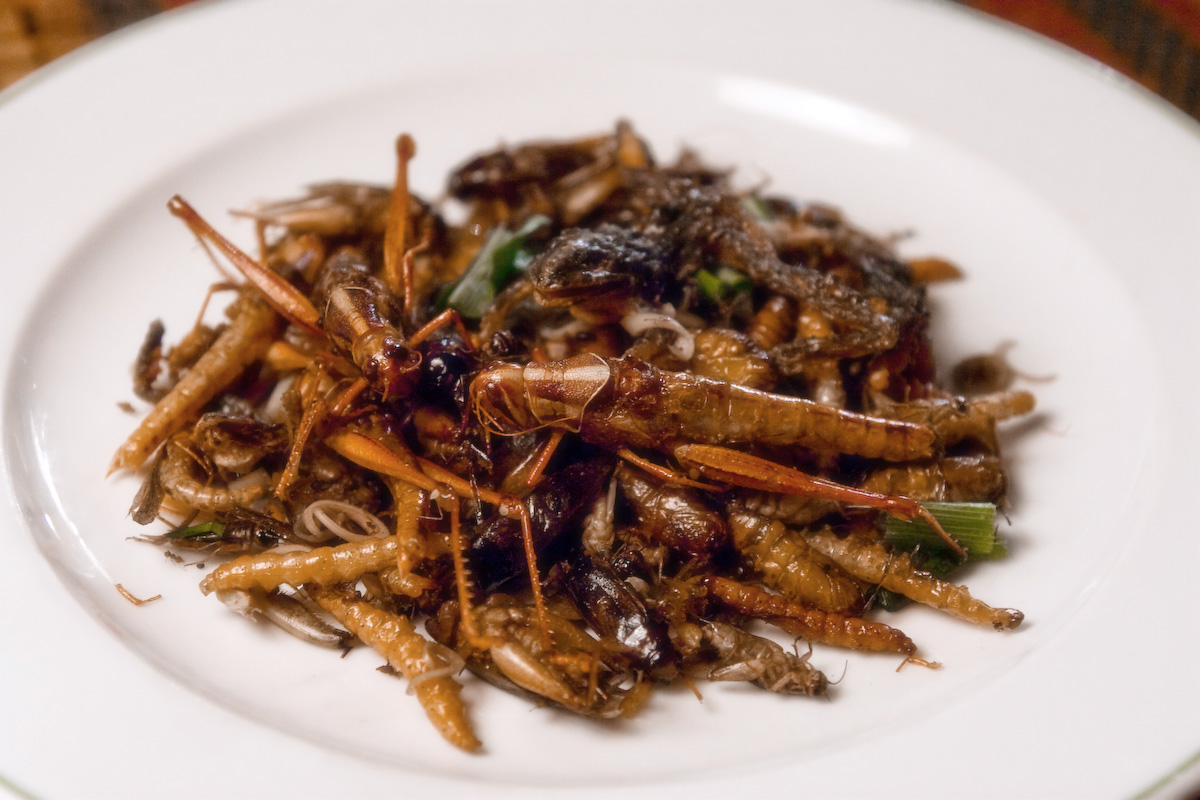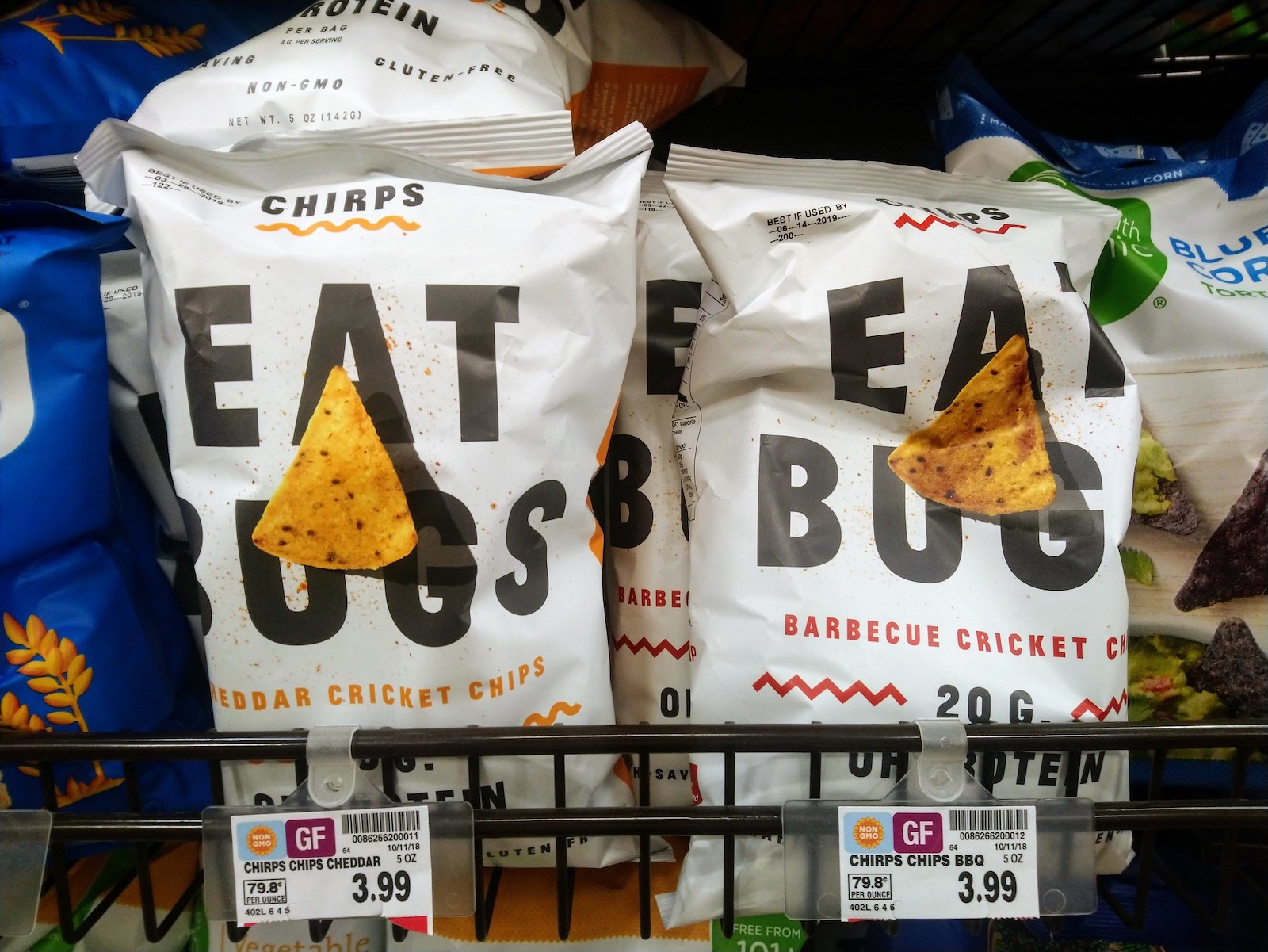I first encountered Uganda’s love for nsenene - sauteed grasshoppers - on the streets of Kampala. People purchased small black plastic baggies from men leaning against motorcycles, then reached into the bag and popped the high-protein delicacies into their mouths. Women worked at preparing bowls full of the tiny green creatures with knives and frying pans. At night, the trapping operations were in full swing, fortresses of sheet metal with bright lights that would have been at home at a high school football game.
Insects are delicious and nutritious components of diets all over the world: cicadas in the Americas, spiders in Southeast Asia, and honeypot ants in Australia, to name a few. However, people in the “Western” world tend to think of insects as a creepy crawly food to be eaten only in extreme cases to avoid starvation. Over the last decade, advocates have been encouraging people to give edible insects a try, citing the low greenhouse gas emissions of producing them. But skeptics worry edible insect production could be less sustainable than it seems, and that convincing people to make such a big diet change might be a ways off.
Health benefits and sustainability
The Food and Agriculture Organization (FAO) of the United Nations has been one of the leading advocates for edible insects as a sustainable source of protein to meet the world’s growing food needs. As food gets harder and harder to produce in many places due to climate change, insects may just be a key to maintaining good nutrition for many people. Many insects are rich in proteins and key minerals like amino acids, antioxidants, and omega-3 fatty acids.
Insects also have what’s called a “high food conversion rate”. In other words, they need less feed to produce more protein. According to FAO, insects can produce the same amount of protein with “six times less feed than cattle, four times less than sheep, and twice less than pigs and broiler chickens”. They don’t burp methane like cows and sheep, and require less land and therefore don’t drive deforestation at such a level as other livestock. Insects can also be fed on biowaste, helping to repurpose food that would otherwise be wasted.

How to eat them
Insects aren’t just nutritious - advocates say they taste good, too. Fried and roasted grasshoppers, crickets, and mealworms are popular snacks all over the world. Termites are also eaten fried, or they can be converted to oil. Ants' eggs are such a delicacy they are called the caviar of the desert. Snails are eaten as escargot. Caterpillars can be smoked to resemble beef jerky.
New businesses taking advantage of rising interest in edible insects draw inspiration from these traditional practices but cater to western tastes. Dried and ground insects are used as powders, often called cricket or mealworm flour. You can make protein-rich poundcakes out of cricket or cookies out of mealworm flour. LA, New York, New Orleans, San Francisco, and Portland all offer restaurants that serve insects. Don Bugito offers chile-lime or chocolate covered crickets for order online. And if you decide that you like it, you can even raise your own crickets or mealworms right in your kitchen.

Will they eat it?
Although demand is growing, consumers still require convincing to overcome aversions to eating insects. In many places, including the U.S., updated legislation is needed to regulate the sale of insects as food products. Questions around food safety still exist, including the possibility of whether certain insects may trigger allergic reactions, most notably in individuals with shellfish allergies. In response to these challenges, many businesses are looking at ways insects can be used as feed for livestock or aquaculture, used in pet food, or even fertilizer.
Sustainability concerns
In the sea of excitement, some skeptics highlight key sustainability concerns. Some native insect eaters fear overharvesting may be a consequence of all the new interest in this traditional food source. And as insect farms grow in size, experts question whether the outcomes are worth the high energy use, particularly when many insects are being produced to be used as feed.
Swedish ecologist Åsa Berggren highlights another risk of insect farming. Akin to fish escapes in aquaculture, insect escapees could wreak havoc on ecosystems. “Today, there’s not much regulation on what insects you’re allowed to import. You can bring in insects that threaten local livelihoods and ecosystems if they escape from where they’re being farmed — and they do escape,” Berggren says.
What comes next
As the world seeks sustainable alternatives for meat, having a range of options with different pros and cons and catering to different tastes, from plant-based to lab-made meats. Insects are a food source that are already viable and readily available, for those willing to eat them. Further research is needed to understand the sustainability benefits at what scale, as well as the potential risks and how to mitigate them.
